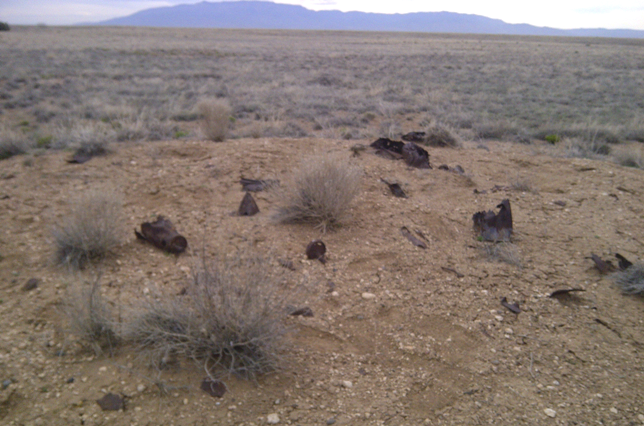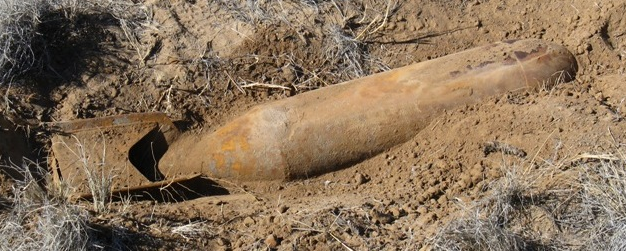
(Left) MUNITIONS DEBRIS -- Should you see stuff like this, you have likely wandered onto an old bombing range.
The Department of Defense (DoD) is responsible for environmental restoration of properties that were formerly owned by, leased to or otherwise possessed by the United States and under the jurisdiction of the Secretary of Defense.
Such properties are known as Formerly Used Defense Sites (FUDS). The U.S. Army is the executive agent for the program and the U.S. Army Corps of Engineers manages and directs the program's administration.
The scope and magnitude of the FUDS program are significant, with more than 10,000 properties identified for potential inclusion in the program. Information about the origin and extent of contamination, land transfer issues, past and present property ownership, and program policies must be evaluated before DoD considers a property eligible for Defense Environment Restoration Account (DERA) funding under the FUDS program.
Environmental cleanup at FUDS properties is conducted in accordance with the Comprehensive Environmental Response, Compensation and Liability Act. http://www.fuds.mil
The DoD has developed a website to provide educational materials about the dangers posed by unexploded ordnance (UXO), munitions, and explosives of concern. Sergeant Woof is the face of the UXO safety education program and the Sergeant Woof website offers materials parents and teachers can use to teach children about the potential danger and the need to remember the 3Rs of unexploded ordnance safety -- Recognize, Retreat and Report.
For the State of New Mexico there are 209 pending projects which have been prioritized with the other 49 states for future inspection and cleanup action by DoD and likely funded with DERA. http://www.usace.army.mil/Portals/2/docs/Environmental/FUDS/FUDS_Inventory/FUDS_Inventory_NewMexico.pdf
When anyone encounters or believes they may have encountered a munition, they should consider it extremely dangerous. To protect their family, friends and neighbors, everyone should learn and follow the 3Rs of explosives safety:
|

|
Recognize -- when you may have encountered a munition and the potential danger; stop, do not move closer;
Retreat -- never touch, move or disturb it; never remove anything near UXO;
Report -- call 911; immediately notify local law enforcement of what you saw and where you saw it.
|
Never attempt to dig up or uncover a munition -- leave this for our Nation's trained and equipped U.S. Military Explosive Ordnance Disposal (EOD) personnel to respond!
Please contact the Albuquerque District Public Affairs Office, at 505-342-3349, for additional information, or to report loss or vandalism to USACE signage. Email: cespa-pa@usace.army.mil